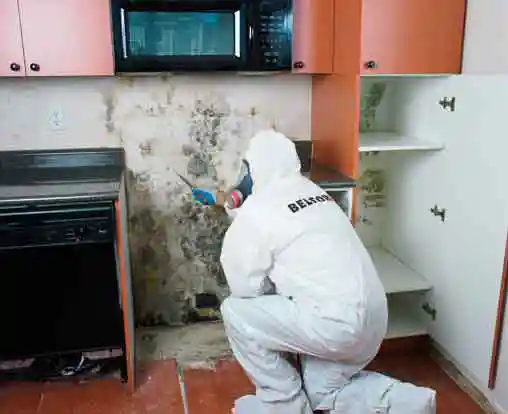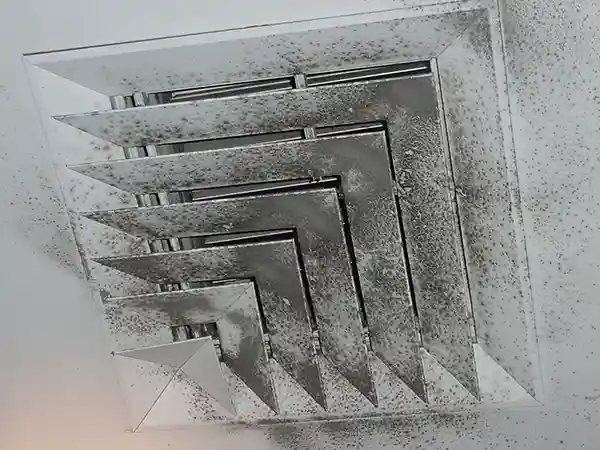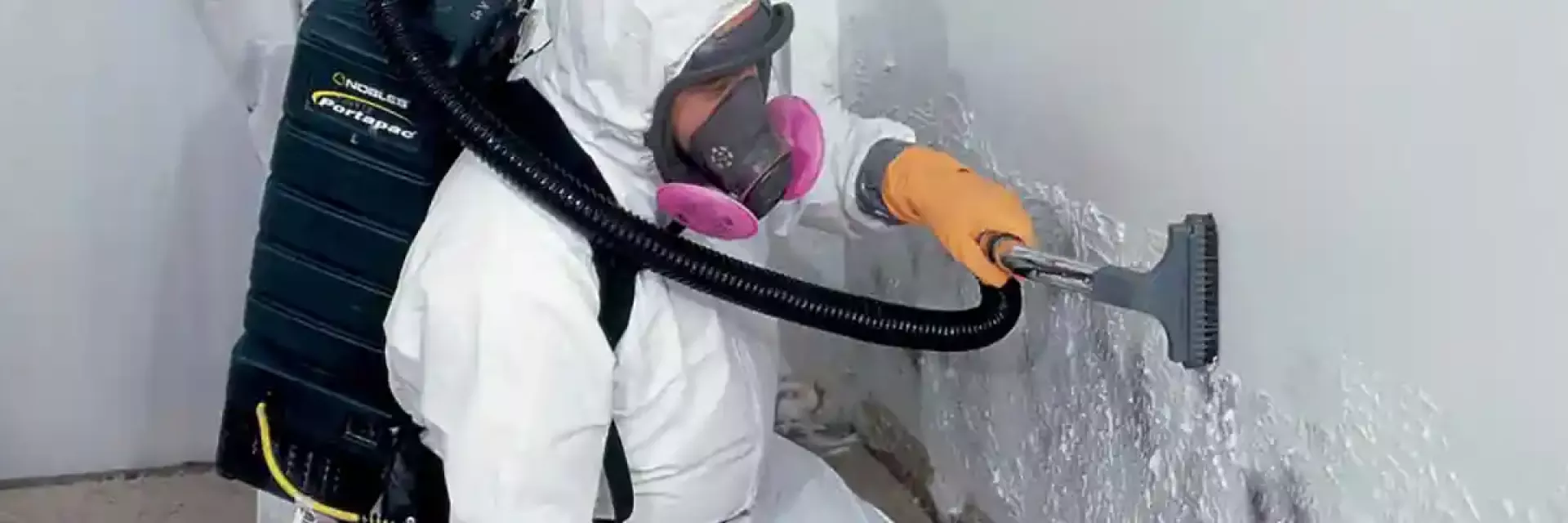Mold Removal and Remediation
Once you’ve identified mold within your home or business, the next step is to ensure its effective removal from the property. Considering the potential property damage and health issues that mold can cause, it’s important for you to make sure this mold is removed from the property as quickly as possible.
Removing mold safely requires expertise. Despite some resources suggesting a simple spray and wipe, it is a detailed and controlled cleaning process. Here’s BELFOR’s guide to how to remediate mold.
How Does A BELFOR Mold Removal Specialist Remediate Mold?
Professional mold remediation is often a necessity in the event when mold is encountered in a property, requiring specialist equipment and expertise. The remediation of mold is a complex process and involves much more than just a simple wipe clean of the affected surfaces. This, and the potential health hazards and risk of recurring issues, means that most mold damage scenarios are often best treated by mold remediation professionals.
If you call on a BELFOR mold remediation team to assist in your property, these are some of the steps that may be taken to treat the problem.
- Fix Any Moisture Problems First
If you suspect that your mold problem has been started by a leak or other water problem, ensure that you fix this first. Mold requires moisture to grow, if your home or business still has a water ingress problem, it’ll make it very difficult to remove the mold problem. If your mold issues are occurring in a naturally damp environment, such as a shower room, extra ventilation may be necessary. - Isolate Areas of Mold
In order to avoid any cross-contamination, areas of mold must be isolated from other areas before demolition, cleaning or drying can begin. Any airflow across affected moldy surfaces can spread mold spores around the building and spread contamination. - Throw Out Absorbent Materials
Certain items that have been affected by mold, particularly porous items, will need to be removed completely. These can either be sent for specialized cleaning (see below) or thrown away. For example, items such as carpet or furniture have fibers in which mold can remain even if you feel you’ve cleaned them thoroughly. This means they may need to be thrown out in order to stop the problem from reoccurring. - Clean Away the Mold
Once highly affected porous materials, such as gypsum board, have been removed, any remaining materials like plywood subfloors and Douglas fir framing can then be cleaned. All visible traces of mold will be removed before an antimicrobial or biocide spray is used to clean the surfaces during a wet wipe. You may have heard of "mold removal spray" products; however, these are not known to actually remove mold and only assist in cleaning after removal. - Thoroughly Dry
A thorough drying process is required to complete mold remediation. This will be accomplished using air movers and dehumidifiers, as well as moisture meters to provide an accurate reading as to whether the materials are dry.
Mold removal isn’t a job that should be taken lightly, and it requires a great level of care. BELFOR’s mold remediation specialist teams always wear protective clothing, that can be laundered or discarded after use. They also use gloves, goggles and, at a minimum, an N-95 mask in order to avoid inhaling mold spores and encountering any health problems.

When Do I Need a Mold Removal Specialist?
For large-scale mold removal, expert knowledge and specialized equipment are required to carry out mold remediation work. Listed below are several other situations in which a mold removal specialist is required in order to guarantee effective mold remediation, regardless of the size of the impacted area.
Proper Structural Drying
In order to reduce the chances of mold reappearing in your home or business, or returning after a clean-up, proper structural drying should take place. BELFOR provides commercial dehumidification and air purifying equipment and ensure that indoor air quality guidelines are followed. This type of large-scale work is particularly important after significant flooding or a large leak in the property. Simply cleaning away the mold without thoroughly drying the property out will mean that remaining moisture leads to reoccurrence.
Disaster Recovery
Any mold that comes as a result of flooding should be removed by a professional mold remediation expert. Flood water can be contaminated by sewage, chemicals and bacteria, and any contaminated water damage must be dealt with by an expert. Similarly, contaminated materials must be dealt with professionally as they pose serious health risks and can cause problems long after the flood.
Specialized Item Cleaning
Different items require different methods and approaches to cleaning and decontamination. If you have an item of personal or sentimental importance that has been affected by mold and are not sure how it can be cleaned, this should be done by a professional team. Even if you’ve thoroughly wiped it and used a product described as a "mold removal spray," there is still a chance that mold spores could remain within the fibers. Mold removal spray does not actual exist; mold must be removed professionally and any spray will just form part of a wet wipe after.
HVAC System Contamination
Any situation where there is or could be mold growth or settled spores impacting the HVAC system of a property requires a mold removal specialist. Because mold grows and travels through spores, when a HVAC system is contaminated by mold, the infestation can quickly spread and become a large-scale issue. Not only would the entire HVAC system need to be cleaned and decontaminated, but any of the spaces warmed or cooled by the air system would also need to be tested and potentially treated for mold due to possible exposure.
BELFOR offers a complete mold remediation process. This includes full structural drying and dehumidification, containment, and decontamination, as well as disposal of contaminated materials. We also recommend third-party air quality testing to ensure the property is safe with dangerous spores removed.
BELFOR’s mold removal teams are considered the best in the industry and were the first to issue mold guidelines in 2002. We were also the contributing authors to the official industry Reference Guide for Professional Mold Remediation. This all means that we are passionate and professional in the work we do.



